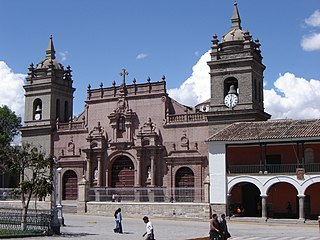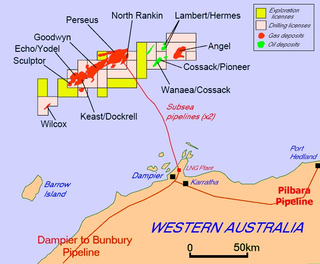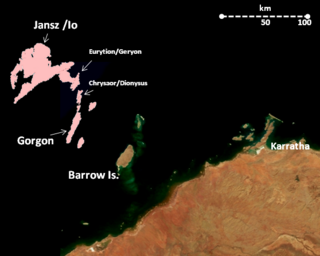Peru LNG is a natural gas liquefaction plant in Pampa Melchorita, Peru, at the 170-kilometre (110 mi) of the South Pan American Highway in San Vicente de Cañete. It is the first natural gas liquefaction plant in South America. [1] [2]

Peru, officially the Republic of Peru, is a country in western South America. It is bordered in the north by Ecuador and Colombia, in the east by Brazil, in the southeast by Bolivia, in the south by Chile, and in the west by the Pacific Ocean. Peru is a megadiverse country with habitats ranging from the arid plains of the Pacific coastal region in the west to the peaks of the Andes mountains vertically extending from the north to the southeast of the country to the tropical Amazon Basin rainforest in the east with the Amazon river.
The project of a Pan-American highway began in or before 1923. The main idea was to create a network of wide roads that would connect the major points of interest in North and South America with a single highway.

San Vicente de Cañete, commonly known simply as Cañete, is a town in Peru, which is the capital of the Cañete Province, in the Lima Region. With a population of 85,533. Cañete is the main town of the San Vicente de Cañete District.
The plant was officially inaugurated on 10 June 2010, and cost US$3.8 billion. It has a nominal capacity of 4.4 million tons of LNG per year. The production complex also consists of two storage tank with a capacity of 130,000 cubic metres (4,600,000 cu ft) of LNG) each, a marine terminal, and a supply pipeline. [1] The plant is supplied from Repsol YPF and Petrobras developed fields near the Camisea fields. [3] The 34-inch (860 mm) supply pipeline runs 408 kilometres (254 mi) from Chinquintirca in Ayacucho area to the LNG plant. [4]
Petróleo Brasileiro S.A. — Petrobras, more commonly known as simply Petrobras, is a semi-public Brazilian multinational corporation in the petroleum industry headquartered in Rio de Janeiro, Brazil. The company's name translates to Brazilian Petroleum Corporation — Petrobras.
The Camisea Gas Project extracts and transports natural gas originating near the Urubamba River in central Peru, the San Martín Reservoir.

Ayacucho, is the capital city of Ayaucho region and of Huamanga Province, Ayacucho Region, Peru.
The plant was designed and built by Chicago Bridge & Iron Company. The marine terminal was built by the CDB consortium (Saipem, Jan De Nul, and Odebrecht). The pipeline system was installed by Techint. [1] [3]

CB&I was a large engineering, procurement and construction (EPC) company with its administrative headquarters in The Woodlands, Texas. CB&I specialized in projects for oil and gas companies. CB&I employed more than 32,000 people worldwide. In May 2018 the company merged into McDermott International.

Saipem S.p.A. is an Italian oil and gas industry contractor. It was a subsidiary of Italian energy company Eni, which owned approximately 30% of Saipem's shares until 2016. Saipem has been contracted for designing and constructing several pipelines, including Blue Stream, Greenstream, Nord Stream and South Stream.

Jan De Nul Group is a family-owned company, with the financial headquarters in Luxembourg, that provides services relating to the construction and maintenance of maritime infrastructure on an international basis. Its main focus is dredging, which accounts for 85% of its turnover. Other areas include civil engineering and environmental technology.
The LNG plant is operated by Peru LNG which is a consortium of Hunt Oil Company (50%), SK Energy (20%), Shell (20%), and Marubeni (10%). [1] [2]

Hunt Oil Co. is an independent oil and gas company headquartered in Dallas, Texas. It conducts its main oil production activities in the United States, Canada and, as of 1984, in Yemen.
Marubeni Corporation is a sōgō shōsha headquartered in Nihonbashi, Chuo, Tokyo, Japan. It is the fifth-largest sogo shosha and has leading market shares in cereal and paper pulp trading as well as a strong electrical and industrial plant business. Marubeni is a member of the Mizuho keiretsu.






